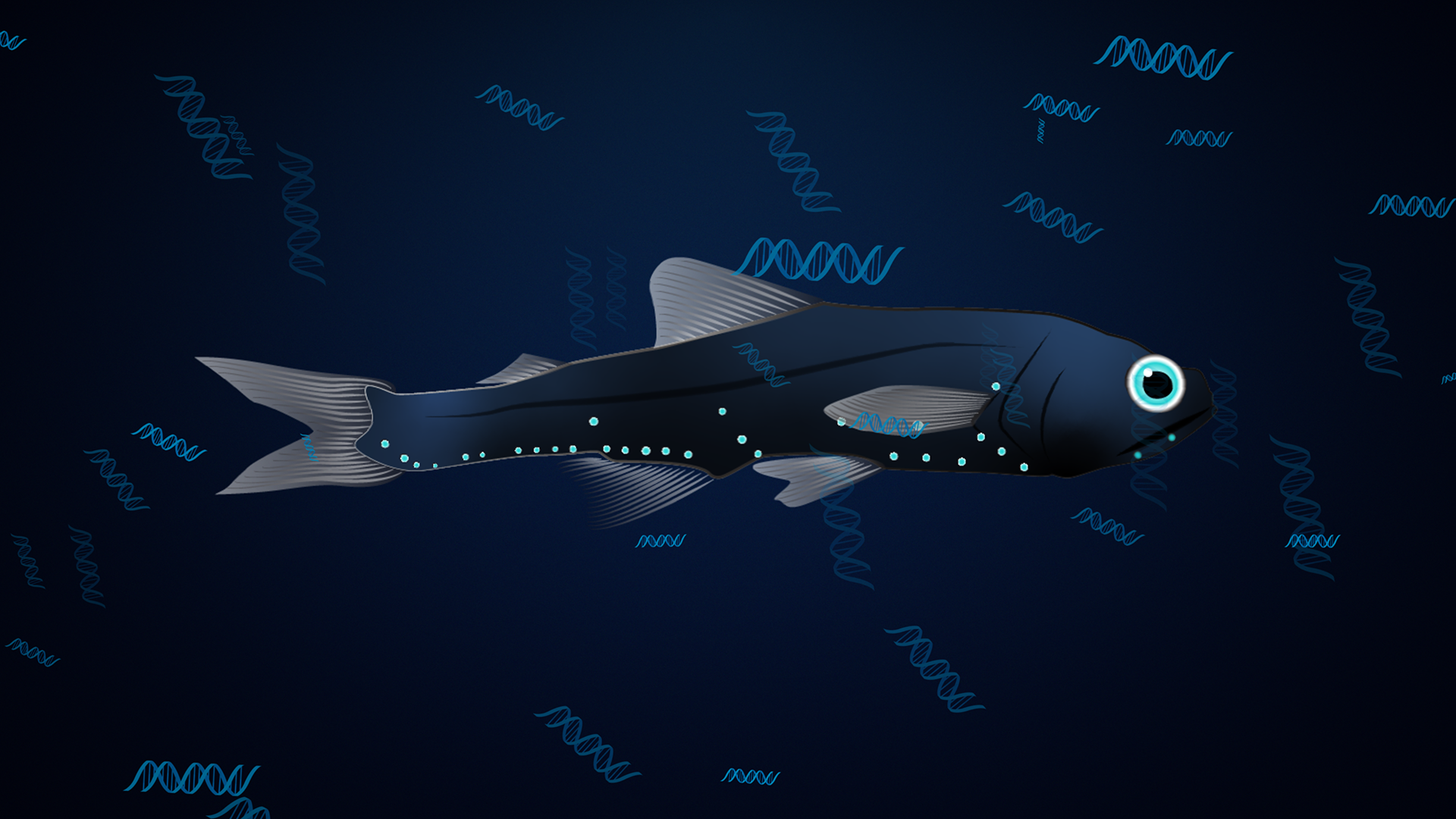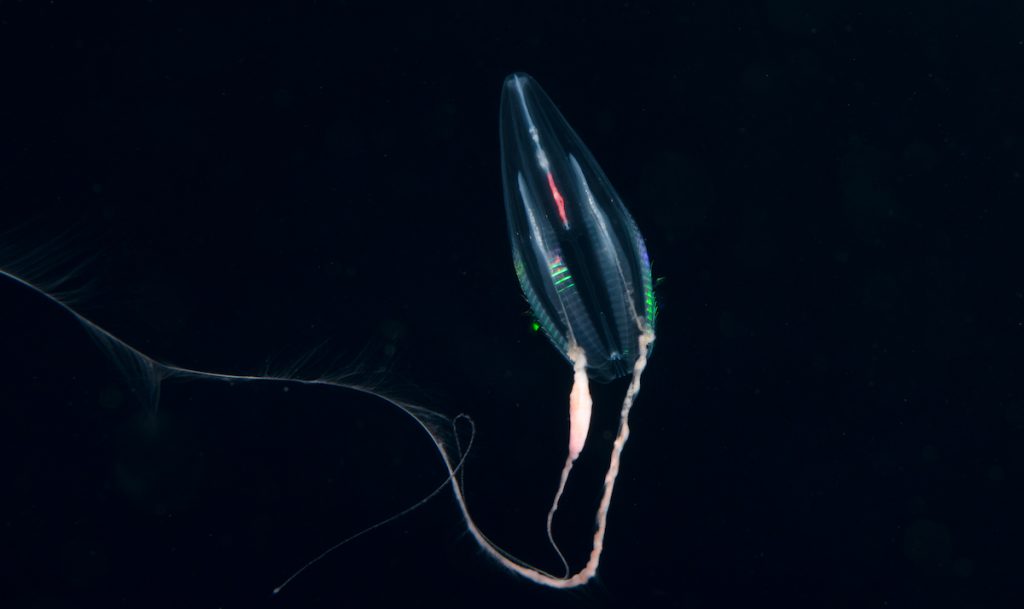What is the Ocean Twilight Zone? September 19, 2018
The ocean twilight zone is a layer of water that stretches around the globe. It lies 200 to 1,000 meters (about 650 to 3,300 feet) below the ocean surface, just beyond the reach of sunlight. Also known as the midwater or mesopelagic, the twilight zone is cold and its light is dim, but with flashes of bioluminescence—light produced by living organisms. The region teems with life. Recent studies suggest that the biomass of fish in the twilight zone may be ten times greater than previously thought—more than in all the rest of the ocean combined.
Animals in the twilight zone range in size from microscopic to among the largest on the planet. Some organisms spend their lives in its shadowy depths, while others travel to and from the surface every day in the largest animal migration on Earth. Animals in the twilight zone help support the ocean’s food web and transport huge amounts of carbon from surface waters into the deep ocean, helping to regulate global climate.
So far, the twilight zone is largely unexplored and its rich biodiversity has remained mostly beyond the reach of commercial fishing—and the international laws that govern the high seas. But some fishing interests are poised to begin extracting the biological resources of the twilight zone, with unknown consequences for marine ecosystems and Earth’s climate.
Music in this video
Learn more
Song
Trillium
Artist
Podington Bear
Album
Melodic Ambient
Licensed to YouTube by
[Merlin] Redeye Distribution (on behalf of HUSH); ASCAP








